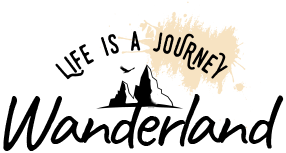Best Time to Visit Switzerland: Seasons, Weather & Festivals
Planning a trip to Switzerland isn’t just about booking flights and hotels—it’s about timing.
This alpine nation offers something unique in every season, from snowy slopes to blooming valleys, sparkling lakes, and vibrant festivals.
Choosing the best time to visit Switzerland can make all the difference in what you experience, how much you spend, and how crowded it feels.
Switzerland’s Climate & Time Zones
Switzerland sits in the heart of Europe and spans a wide range of altitudes, from lowland cities such as Zurich and Geneva to mountain villages perched high in the Alps.
- Lowlands: milder winters, warmer summers.
- Alps: long snowy winters, cool summers, and sudden weather changes that surprise even seasoned hikers.
The country follows Central European Time (CET, UTC +1) in winter and switches to Central European Summer Time (CEST, UTC +2) between late March and late October.
When planning your trip, always check daylight savings dates so flight times, train schedules, and activity bookings align smoothly.
Check Switzerland’s Weather Forecast
Seasonal Breakdown: When to Go & Why
Winter (December – February): Skiing & Snow Adventures
Winter transforms Switzerland into a snow lover’s paradise. Resorts like Zermatt, St. Moritz, and Verbier draw skiers and snowboarders from around the world, while cities such as Zurich and Basel host enchanting Christmas markets.
Frozen lakes add to the magic, offering skating opportunities against snowy backdrops.
With temperatures often plunging below freezing in the Alps, winter is ideal for anyone chasing alpine sports and cozy après-ski culture.
Spring (March – May): Flowers & Fresh Air
As snow retreats from the valleys, Switzerland blooms in color.
Wildflowers carpet alpine meadows, vineyards around Lake Geneva come alive, and Lucerne becomes even more picturesque with cherry blossoms.
Temperatures usually sit between 10–18°C (50–65°F), though higher trails can remain snowy into late May. Spring is perfect for travelers who want scenic landscapes without the peak summer crowds.
Summer (June – August): Hiking & Lakeside Escapes
Summer is Switzerland’s busiest season, and for good reason. Long days and warm temperatures, ranging from 18–28°C (65–82°F) in the cities, make it the best time for outdoor adventures.
Hikers flock to famous routes such as the Eiger Trail, while others cool off with swims in Lake Zurich or embark on panoramic journeys aboard the Glacier Express.
Families, festival-goers, and nature lovers alike find summer irresistible.
Autumn (September – November): Golden Colors & Quiet Charm
Autumn offers a quieter, more intimate Switzerland. Vineyards in the Lavaux region turn golden, Ticino hosts chestnut festivals, and tourist numbers drop noticeably.
Days are crisp and cool, averaging between 8–15°C (46–59°F), with rain and early snowfall returning to higher altitudes by late November.
It’s an ideal time for budget-conscious travelers, wine enthusiasts, or anyone who wants a more peaceful experience.
Festivals & Events Worth Timing Your Trip For
Switzerland’s cultural calendar adds sparkle to any trip:
- Basel Fasnacht Carnival – Monday after Ash Wednesday (late Feb or early Mar)
- Lucerne Fasnacht – Thursday before Lent until Ash Wednesday (mid–late Feb)
- Zurich’s Sechseläuten – Third Monday of April (burning of the Böögg snowman)
- Montreux Jazz Festival – Early July (e.g., July 4–19, 2025)
- Locarno Film Festival – Early–mid August (e.g., August 6–16, 2025)
- Wine Harvest Festivals – September–October across Vaud & Valais
👉 See Montreux Jazz Festival details
Best Time by Traveler Type
The best time to go to Switzerland varies depending on travel style. Budget travelers will find the most value in late autumn (October–November) and early spring (March–April).
Flights and hotels are more affordable, attractions are less crowded, and while some mountain lifts may close, cities and countryside escapes remain vibrant.
Luxury travelers, on the other hand, gravitate toward peak seasons. Winter, with its glamorous ski resorts such as St. Moritz, offers upscale lodges, après-ski indulgence, and exclusive events.
Summer brings lakeside resorts, high-end hotels, and private tours, all catering to those who prefer a more lavish Swiss experience.
FAQs About the Best Time to Visit Switzerland
Q: What is the cheapest month to visit Switzerland?
Late October to mid-December and March to April are budget-friendly months. Fewer tourists, lower hotel rates, and cheaper flights make these shoulder seasons ideal for saving money.
Q: When is the best time to hike in the Swiss Alps?
The best hiking conditions are from mid-June to mid-September, when trails are clear of snow and mountain huts are open.
Q: Which month has the best weather in Switzerland?
July and August offer the warmest and sunniest days, perfect for lakeside escapes and mountain hiking, though they’re also the busiest months.
Q: When is Switzerland least crowded?
Late autumn (October–November) and early spring (March–April) are the quietest times, with fewer crowds in both cities and alpine villages.
Q: When is the best time for skiing in Switzerland?
Ski season runs December through April, with the best snow conditions usually from January to March. Resorts like Zermatt even offer year-round glacier skiing.
Choosing the Right Time for Your Switzerland
The best time to visit Switzerland depends on what you want most:
- Winter for skiing and snow magic.
- Spring for flowers and peaceful escapes.
- Summer for hiking, lakes, and festivals.
- Autumn for golden vineyards and quiet charm.
Ultimately, there’s no wrong season in Switzerland, only the one that best matches your travel dreams. With thoughtful planning, every trip to this alpine wonderland can be its own magical adventure.
👉 Check Switzerland’s Official Tourism Board
Related Articles:

